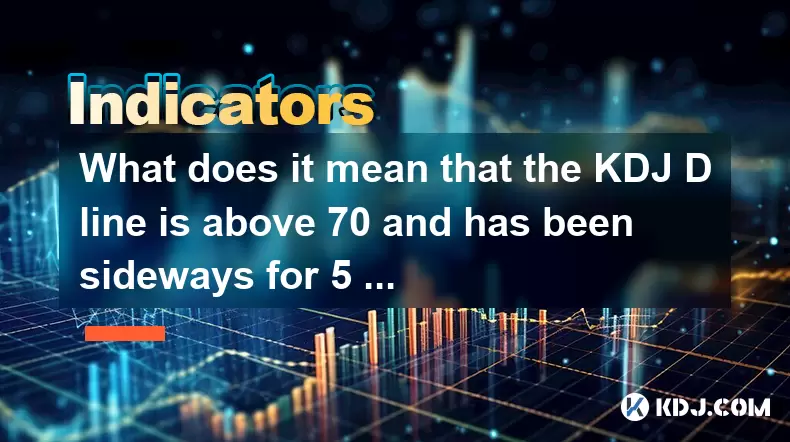-
 Bitcoin
Bitcoin $118600
0.36% -
 Ethereum
Ethereum $3855
1.06% -
 XRP
XRP $3.195
-0.09% -
 Tether USDt
Tether USDt $1.000
-0.04% -
 BNB
BNB $844.5
6.23% -
 Solana
Solana $191.3
2.83% -
 USDC
USDC $0.9997
-0.01% -
 Dogecoin
Dogecoin $0.2376
0.10% -
 TRON
TRON $0.3242
0.83% -
 Cardano
Cardano $0.8222
0.13% -
 Hyperliquid
Hyperliquid $45.26
6.53% -
 Sui
Sui $4.200
-2.56% -
 Stellar
Stellar $0.4336
-1.24% -
 Chainlink
Chainlink $18.86
0.28% -
 Hedera
Hedera $0.2796
-1.75% -
 Bitcoin Cash
Bitcoin Cash $583.3
-1.84% -
 Avalanche
Avalanche $27.06
8.09% -
 Litecoin
Litecoin $112.3
-1.16% -
 Toncoin
Toncoin $3.353
0.58% -
 UNUS SED LEO
UNUS SED LEO $8.968
-0.11% -
 Shiba Inu
Shiba Inu $0.00001395
-0.54% -
 Ethena USDe
Ethena USDe $1.001
-0.03% -
 Uniswap
Uniswap $10.76
0.69% -
 Polkadot
Polkadot $4.175
0.26% -
 Monero
Monero $326.7
1.07% -
 Bitget Token
Bitget Token $4.665
1.61% -
 Dai
Dai $0.9998
-0.02% -
 Pepe
Pepe $0.00001271
0.32% -
 Cronos
Cronos $0.1416
2.01% -
 Aave
Aave $299.3
1.15%
What does it mean that the KDJ D line is above 70 and has been sideways for 5 consecutive days?
When the KDJ D line stays above 70 and moves sideways for 5 days, it signals weakening momentum in an overbought market, often preceding a pullback—watch for confirmation like a K-line cross below D or falling volume.
Jul 28, 2025 at 11:29 pm

Understanding the KDJ Indicator in Cryptocurrency Trading
The KDJ indicator is a momentum oscillator widely used in cryptocurrency technical analysis to identify overbought and oversold conditions. It consists of three lines: the %K line, the %D line, and the %J line. The %K line represents the current momentum, the %D line is a moving average of %K, and the %J line reflects the divergence of %K from %D. Traders pay particular attention to the %D line because it smooths out the volatility of %K, offering a clearer signal of trend strength and potential reversals.
When analyzing price movements in volatile assets like Bitcoin or Ethereum, the KDJ helps assess whether a digital asset is potentially overextended. The typical range for the indicator is between 0 and 100. A reading above 70 on the %D line generally indicates overbought conditions, suggesting that the asset may be due for a pullback or correction. Conversely, readings below 30 suggest oversold conditions.
Significance of the D Line Above 70
When the KDJ D line crosses above 70, it signals that upward momentum has been strong over the recent period. In the context of cryptocurrency markets, where prices can surge rapidly due to speculation or news events, such a reading is not uncommon during bullish runs. However, sustained values above 70 indicate that the market may be overheated. This does not necessarily mean an immediate reversal, but it raises caution among traders about potential downside risk.
The D line being above 70 reflects that the average of the %K values has remained elevated. This implies consistent buying pressure and confidence among market participants. Yet, in highly speculative environments like crypto, extended overbought readings can precede sharp corrections, especially if they are not supported by fundamental developments or on-chain activity.
What Does "Sideways for 5 Consecutive Days" Mean?
A sideways movement of the D line for five consecutive days means that the value of the %D line has remained relatively flat, fluctuating within a narrow range without a clear upward or downward trend. This typically occurs when the underlying price action of the cryptocurrency enters a consolidation phase. During this period, neither bulls nor bears are able to gain decisive control.
In practical terms, this lateral movement at high levels (above 70) suggests that while the market remains in overbought territory, momentum is stalling. The lack of further upward progression in the D line indicates diminishing buying pressure. This condition can be interpreted as a warning sign — the uptrend may be losing steam, and traders should monitor for bearish confirmation signals such as a crossover of the K line below the D line or a drop in trading volume.
- Check the price chart to confirm whether the asset is trading in a tight range.
- Observe volume trends — declining volume during sideways D line movement often confirms weakening momentum.
- Look for divergence between price and the KDJ — if price makes higher highs while the D line fails to do so, it signals weakening momentum.
Interpreting the Combined Signal
When the KDJ D line is above 70 and moves sideways for five days, it forms a specific technical pattern that traders should not ignore. This combination suggests that the cryptocurrency has been in a strong uptrend, but momentum is no longer accelerating. The sideways action indicates equilibrium between supply and demand at elevated levels.
This phase often precedes one of two outcomes: either the market gathers strength to break higher, or it reverses due to profit-taking. In cryptocurrency markets, where leverage and sentiment play major roles, such a signal frequently precedes short-term pullbacks. Traders might use this as a cue to tighten stop-loss orders or take partial profits, especially if other indicators like RSI or MACD show similar signs of exhaustion.
- Watch for a cross below 70 by the D line — this could confirm a bearish shift.
- Monitor support levels on the price chart to anticipate potential downside targets.
- Consider on-chain metrics such as exchange inflows or whale movements to assess whether large holders are exiting positions.
How to Respond to This Signal: A Step-by-Step Guide
When you observe the KDJ D line above 70 and moving sideways for five days, taking structured action can help manage risk effectively. The following steps outline a practical approach for cryptocurrency traders:
- Open your preferred trading platform (e.g., Binance, Bybit, or TradingView) and load the KDJ indicator on the chart of the cryptocurrency you're analyzing.
- Set the KDJ parameters to the standard (9, 3, 3) unless you have a customized strategy.
- Confirm that the %D line has been at or above 70 for at least five full trading days (use daily candles for this analysis).
- Check if the %K line has crossed below the %D line during this period — this adds bearish weight to the signal.
- Examine price action — is the asset forming lower highs or long upper wicks? These are signs of rejection at resistance.
- Review trading volume — decreasing volume during consolidation supports the idea of weakening momentum.
- Consider placing a limit sell order slightly below the current price to capture profits if a reversal begins.
- Alternatively, set a stop-loss order below a key support level to protect gains.
This method ensures that decisions are based on observable data rather than emotion, which is crucial in the highly volatile crypto market.
Frequently Asked Questions
Q: Can the KDJ D line stay above 70 for longer than 5 days without a reversal?
Yes, in strong bullish trends, especially during crypto bull markets, the D line can remain above 70 for extended periods. Assets like Bitcoin have shown overbought KDJ readings lasting weeks without immediate reversal, as sustained demand keeps prices elevated. The key is to assess whether the trend is supported by fundamentals or macro factors.
Q: Does the 5-day sideways movement need to be perfectly flat?
No, "sideways" refers to a lack of significant directional movement, not perfect flatness. Minor fluctuations within a narrow band (e.g., 72 to 74) still qualify. The focus is on the absence of a clear trend, indicating stalled momentum.
Q: Should I short the market when I see this KDJ pattern?
Not necessarily. While the pattern suggests caution, shorting requires additional confirmation such as a bearish candlestick pattern, volume spike, or breakdown below support. Entering short positions solely on KDJ signals can be risky in trending markets.
Q: Is the KDJ indicator reliable across all cryptocurrencies?
The KDJ works best on major cryptocurrencies with high liquidity, like BTC or ETH. On low-cap altcoins with erratic price movements, the indicator may generate false signals due to manipulation or low trading volume. Always combine it with other tools for better accuracy.
Disclaimer:info@kdj.com
The information provided is not trading advice. kdj.com does not assume any responsibility for any investments made based on the information provided in this article. Cryptocurrencies are highly volatile and it is highly recommended that you invest with caution after thorough research!
If you believe that the content used on this website infringes your copyright, please contact us immediately (info@kdj.com) and we will delete it promptly.
- Avalanche (AVAX) Price Pump Incoming? Analysts Weigh In
- 2025-07-29 06:50:12
- Presales, Investment, July 2025: What's Hot and What's Not
- 2025-07-29 06:30:12
- PayPal, Bitcoin, and Merchants: A New Era of Commerce?
- 2025-07-29 07:10:13
- RUVI Token's Ripple Rally Potential: Audited AI Crypto Heats Up!
- 2025-07-29 04:50:12
- ADA Price, Cardano, SUI & Remittix: Decoding the Latest Crypto Moves
- 2025-07-29 04:50:12
- Solana, ARK Invest, and Staking: A New Era of Institutional Crypto?
- 2025-07-29 05:30:12
Related knowledge

What does it mean when the EMA combination crosses upward for the first time after sideways trading?
Jul 28,2025 at 03:43pm
Understanding the EMA and Its Role in Technical AnalysisThe Exponential Moving Average (EMA) is a widely used technical indicator in cryptocurrency tr...

What signal does the ROC send when it rises rapidly from a low level and breaks through the zero axis?
Jul 27,2025 at 10:15am
Understanding the Rate of Change (ROC) IndicatorThe Rate of Change (ROC) is a momentum-based oscillator used in technical analysis to measure the perc...

What does it mean when the price breaks through the double bottom neckline and the moving averages are arranged in a bullish pattern?
Jul 28,2025 at 10:57am
Understanding the Double Bottom PatternThe double bottom is a widely recognized reversal chart pattern in technical analysis, particularly within the ...

What signal does the DMA fast line cross the slow line above the zero axis?
Jul 28,2025 at 05:42am
Understanding the DMA Indicator and Its ComponentsThe DMA (Difference of Moving Averages) indicator is a technical analysis tool used in cryptocurrenc...

What does it mean that the rebound is blocked after the moving average is arranged in a short position for the first time?
Jul 26,2025 at 10:51am
Understanding the Short-Term Moving Average ConfigurationWhen traders refer to a 'short position arrangement' in moving averages, they are describing ...

What does it mean that the ZIGZAG low point is raised and the high point breaks through the previous peak?
Jul 28,2025 at 03:28am
Understanding the ZIGZAG Indicator in Cryptocurrency TradingThe ZIGZAG indicator is a technical analysis tool widely used in cryptocurrency trading to...

What does it mean when the EMA combination crosses upward for the first time after sideways trading?
Jul 28,2025 at 03:43pm
Understanding the EMA and Its Role in Technical AnalysisThe Exponential Moving Average (EMA) is a widely used technical indicator in cryptocurrency tr...

What signal does the ROC send when it rises rapidly from a low level and breaks through the zero axis?
Jul 27,2025 at 10:15am
Understanding the Rate of Change (ROC) IndicatorThe Rate of Change (ROC) is a momentum-based oscillator used in technical analysis to measure the perc...

What does it mean when the price breaks through the double bottom neckline and the moving averages are arranged in a bullish pattern?
Jul 28,2025 at 10:57am
Understanding the Double Bottom PatternThe double bottom is a widely recognized reversal chart pattern in technical analysis, particularly within the ...

What signal does the DMA fast line cross the slow line above the zero axis?
Jul 28,2025 at 05:42am
Understanding the DMA Indicator and Its ComponentsThe DMA (Difference of Moving Averages) indicator is a technical analysis tool used in cryptocurrenc...

What does it mean that the rebound is blocked after the moving average is arranged in a short position for the first time?
Jul 26,2025 at 10:51am
Understanding the Short-Term Moving Average ConfigurationWhen traders refer to a 'short position arrangement' in moving averages, they are describing ...

What does it mean that the ZIGZAG low point is raised and the high point breaks through the previous peak?
Jul 28,2025 at 03:28am
Understanding the ZIGZAG Indicator in Cryptocurrency TradingThe ZIGZAG indicator is a technical analysis tool widely used in cryptocurrency trading to...
See all articles

























































































